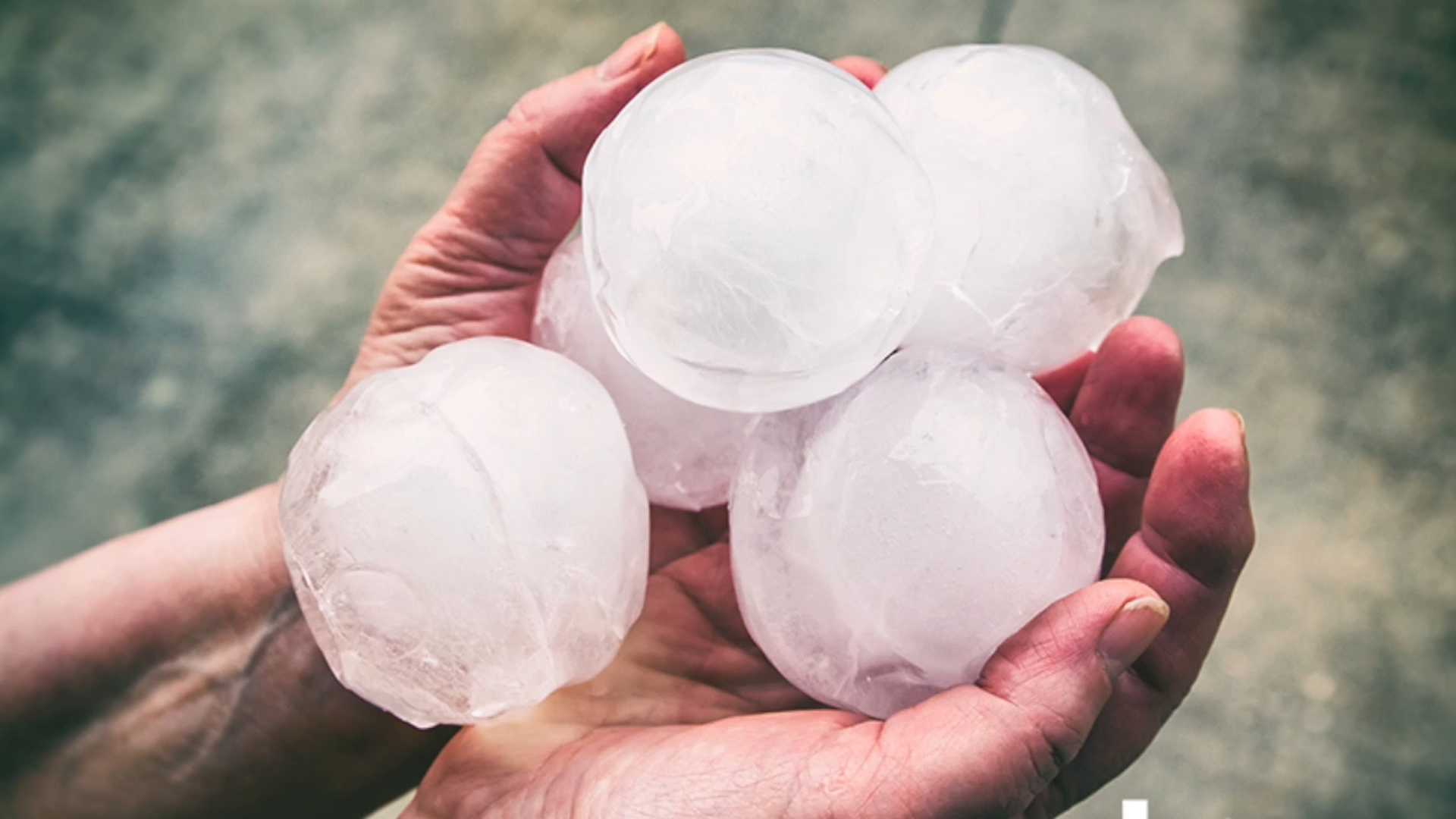AUSTIN, Texas — Texas is famous for its thunderstorms. And many times, those thunderstorms have a risk of hail.
Most times when hail falls, it’s no big deal. But other times, hail can be downright destructive.
Hail is a pretty regular occurrence around Austin. But to a non-meteorologist, it holds a lot of mystery.
Does every thunderstorm have hail? How does it form? And why are some hailstones smooth and others so spikey?
During the spring, summer and fall, Texas is really warm. So how does ice fall from the sky? Unlike snow or sleet, it doesn't need cold surface temperatures to form. The secret to hail formation lies in the frozen upper atmosphere.
A thunderstorm is fed by an updraft. Within the updraft, strong wind carries little water droplets up into the tall cloud, where temperatures are much colder. When the droplets reach the “freezing level” of the cloud, they freeze, become heavy and fall back down below the freezing level. This is when the surface of the little haillet gathers more water, like a magnet.
All of a sudden, here comes the updraft again, now back above the freezing level. The water freezes over again, creating a new layer of ice. This process happens over and over again, until the hail is too heavy for the updraft and falls to the ground.
The updraft is also key to the size variations we see in hail. A strong updraft can support really big hail.
This process alone creates that nice smooth hail, layer by layer. But spiky hail occurs when the turbulent upper-atmospheric winds of a thunderstorm make hailstones collide into one another. Unlike smooth hail, where the layers of water freeze on contact, with spikey hail, the supercooled water acts like glue, causing the hailstones that collide to stick together.
And no, not all thunderstorms produce hail. Sometimes hail forms but melts before it hits the ground due to too much warm air. Other times, thunderstorms can't grow tall enough to get enough freezing air needed for significant hail formation.
And that’s your crash course on hail.

